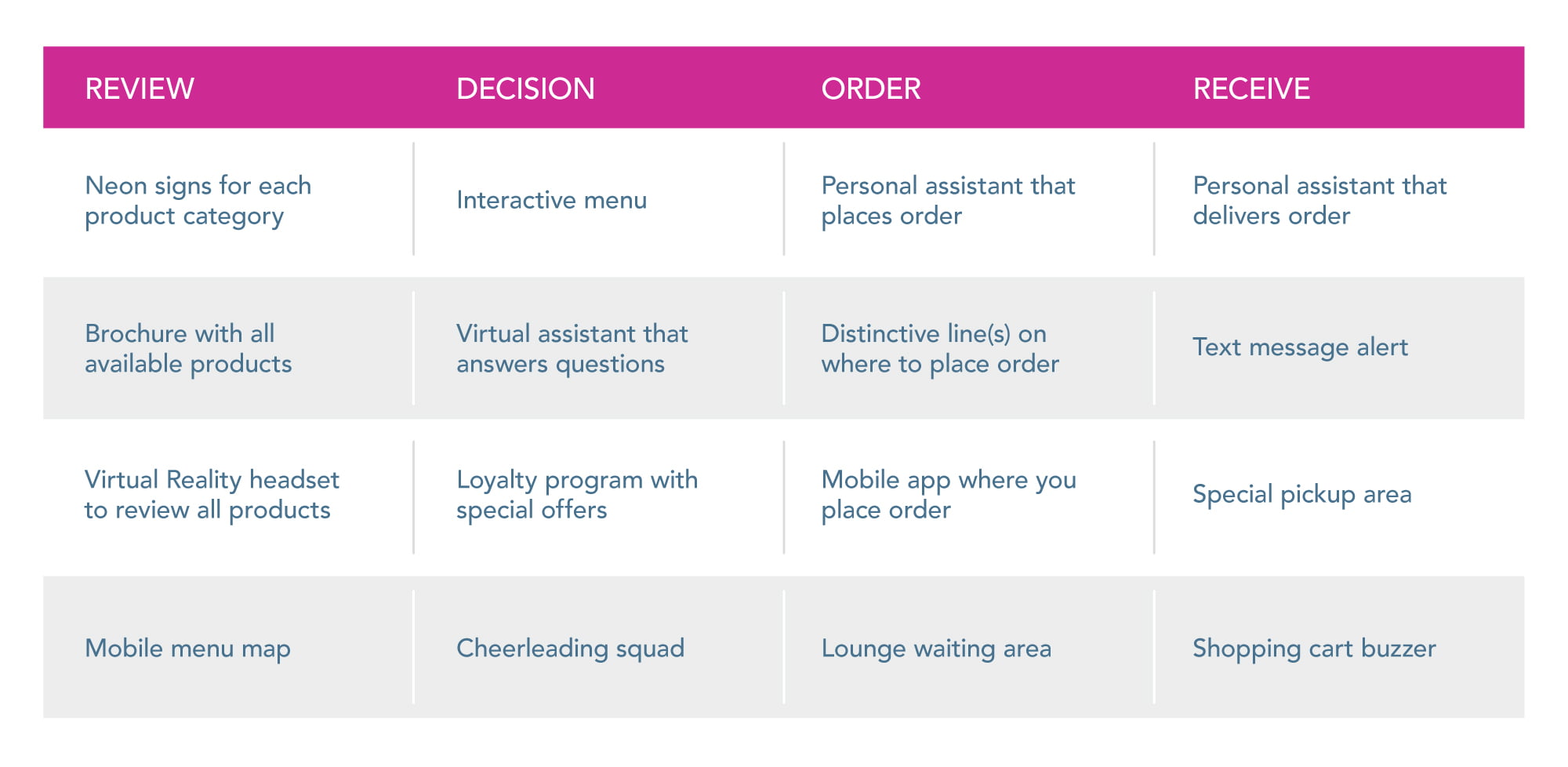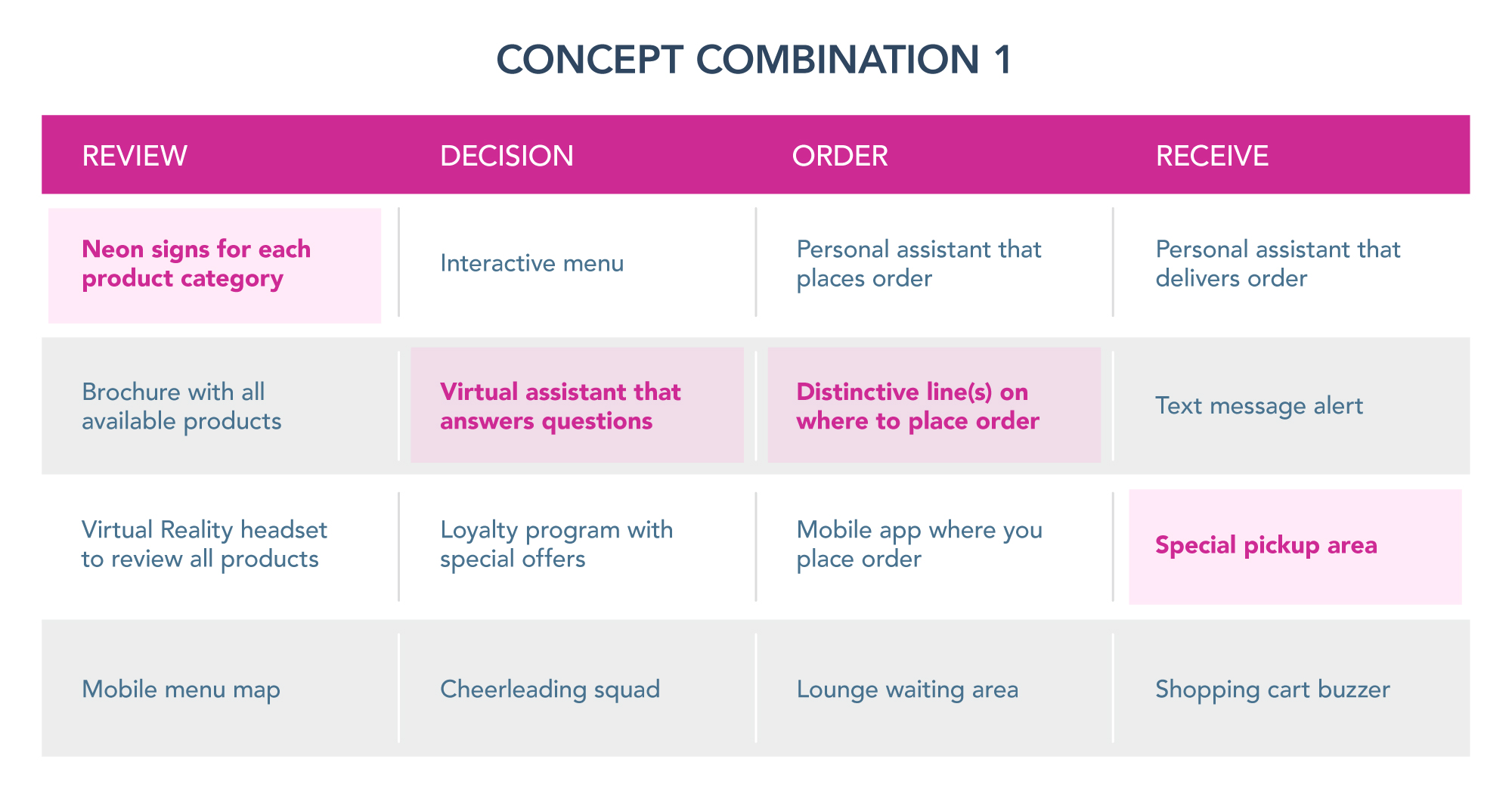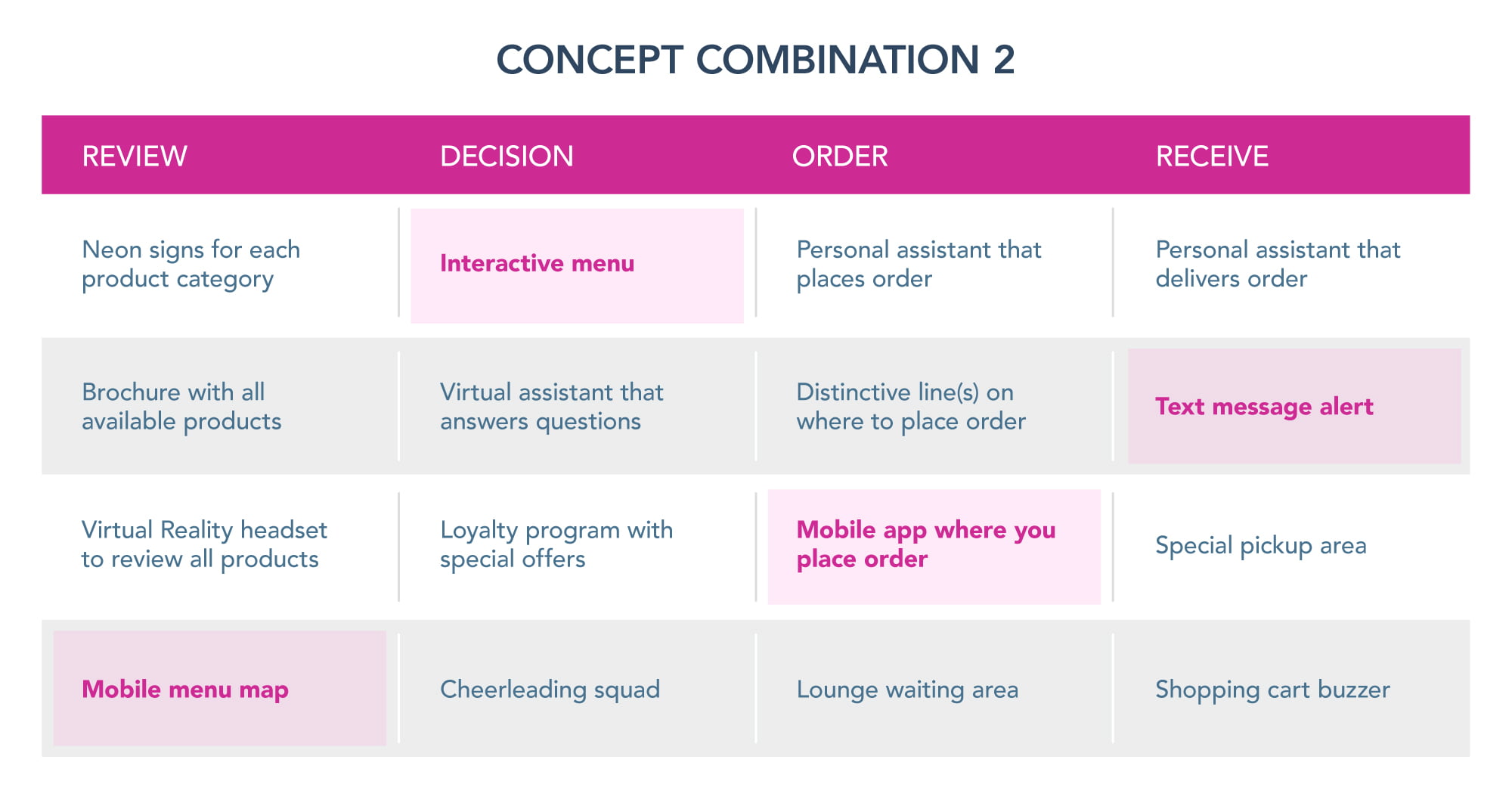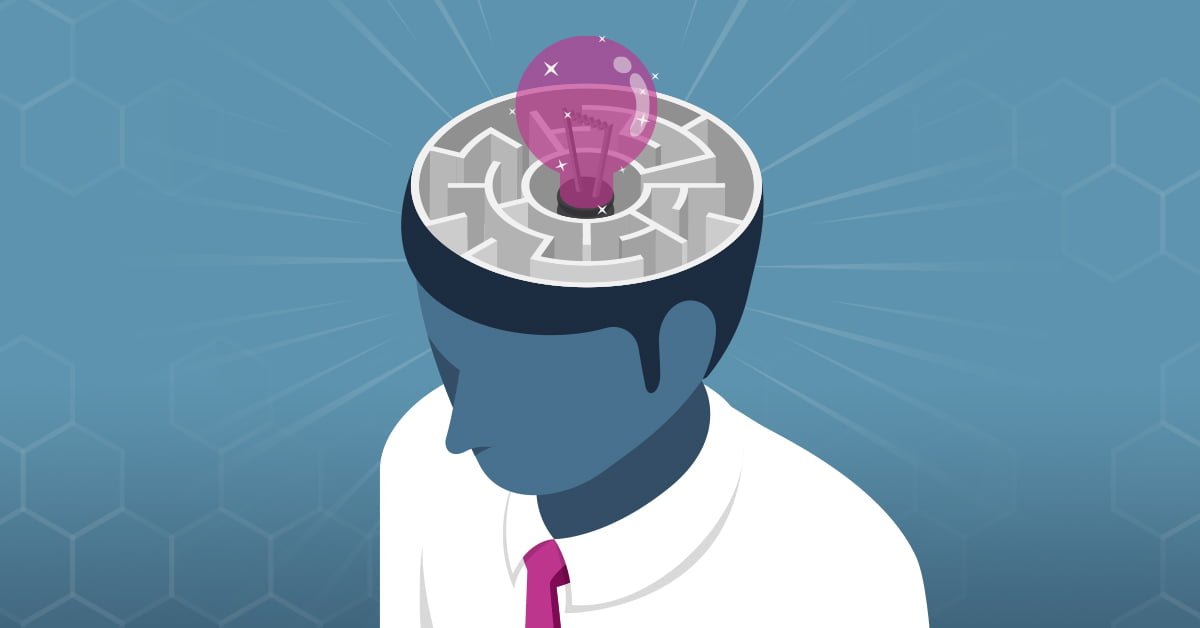Design thinking is the human centered approach to innovation. Half a dozen of our team members here at Zion & Zion have extensive training at the Stanford d.school in the process of Design Thinking which consists of five phases: Empathy, Define, Ideate, Prototype, and Test. Once you have empathized with your target market and defined a real problem and/or opportunity, you are ready to start ideation.
Instead of trying to solve for the entire problem, often it is much easier and more manageable to break the problem up—a method called problem decomposition. Imagine you’ve been tasked to improve customer service processes for a grocery store. Perhaps when you were conducting your empathy interviews, you determined some collective customer pain points when it comes to ordering at the deli counter. Instead of ideating to improve the entire deli counter ordering experience, you can decompose the service process and ideate based on several sub problems. Using this example, below are the steps to successfully decompose your problem and come to an innovative solution.
Divide Your Problem into Sub Problems
You’ve conducted your empathy interviews and determined the deli counter is a major cause of complaint and defined the problem: Customers get overwhelmed when they approach the deli counter with all the product options and other people waiting, then choose to leave before following through with their purchase.
Before jumping straight to ideation, divide the problem up into several sub problems and categorize accordingly. To do this, you start with labeling the categories first. Categories represent the steps within a product or service cycle. The categories in the case of the deli counter innovation would be:
- Review Products
- Make a Decision
- Place the Order
- Receive the Order
Within each category, you then identify sub problems that need to be addressed based on your empathy interviews. Sub problems are worded in a way that show what the innovation needs to achieve versus focusing on the current problem at hand. Below are a few examples to show how these sub problems are created within each category using the deli counter innovation:
Review Products
- The innovation identifies clearly where products are located.
- The innovation allows customers to easily review products.
Make a Decision
- The innovation provides helpful information.
- The innovation motivates the customer to take action.
Place the Order
- The innovation gives the customer a clear idea of the order queue.
- The innovation makes it convenient for the customer to place their order.
Receive the Order
- The innovation clearly alerts the customer when their order is ready.
- The innovation makes it convenient for the customer to receive their order.
Wording the sub problems as needs statements gives you a clear picture of what you need to focus on when brainstorming instead of focusing on what is currently not working.
Brainstorm for Each Sub Problem
Now that the categories have been established and the sub problems have been identified, it is time to start brainstorming. One of my fellow team members here at Zion & Zion wrote a blog about Design Thinking Brainstorming 101 which has some great tips on how to facilitate a brainstorming session and methods on how to keep the momentum going.
Using the categories determined above (Review Products, Make a Decision, Place the Order, and Receive the Order), create a table with each category as a header. Using the sub problem innovation needs statements, list several ideas below in each category bucket. The more ideas the better, so utilizing the tips Jennifer outlines in her blog will be key such as deferring judgement, encouraging crazy ideas, and building on the ideas of others.
Below are just a few ideas for the deli counter innovation example but obviously more should be generated when doing your own ideation session.

After your brainstorming session, it is important to review all ideas and identify those that address primary and secondary needs as well as latent needs. Latent needs are hidden needs that your interviewees will not outwardly come out and say. These needs take careful observation but when addressed will surprise and delight customers.
Combine Ideas into the Concept
The greatest benefit of problem decomposition and listing out all ideas is that it allows us to explore a wide variety of potential solutions. In the example of the deli counter innovation, a couple combinations of potential solutions could look something like this:


Once the team has determined several concept combinations, it will be important to down select to two or three. A few questions to keep in mind during the down selection process:
- Has this concept already been done?
- Has the technology already been created? Are there patents and/or licensing that we should be aware of?
- Has this concept addressed all our users?
- Has this concept addressed our users’ latent needs?
Answering these questions should help cull down the options and give your team a clear path on how to proceed. If your team is struggling to answer the last two questions, you made need to go back out in the field and ask your users directly. The design thinking process is extremely fluid so jumping from one step to another for the occasional gut check is completely normal.
Conclusion
You should never let a complex problem get in the way of you coming up with great and innovative ideas. Problem decomposition is a fantastic tool to help you break your problem into several sub problems, ideate, and then combine your ideas into a concept. It is also a great way to gut-check yourself to make sure you’re on the right path from Define to Prototype. If you feel like your sub problems are not matching with your users’ needs statements, then you may need to jump back to Define or possible even farther to Empathize.
Once you’ve settled on two or three innovative concepts, you’ll be ready to go back out in the field to start prototyping. But that’s a topic for another day.
